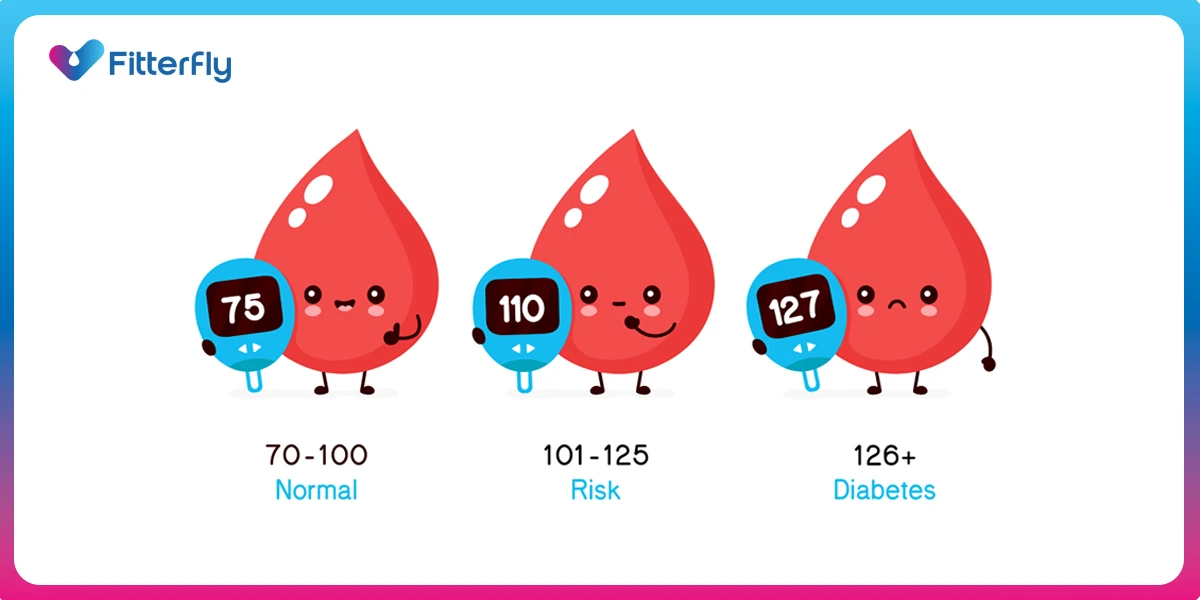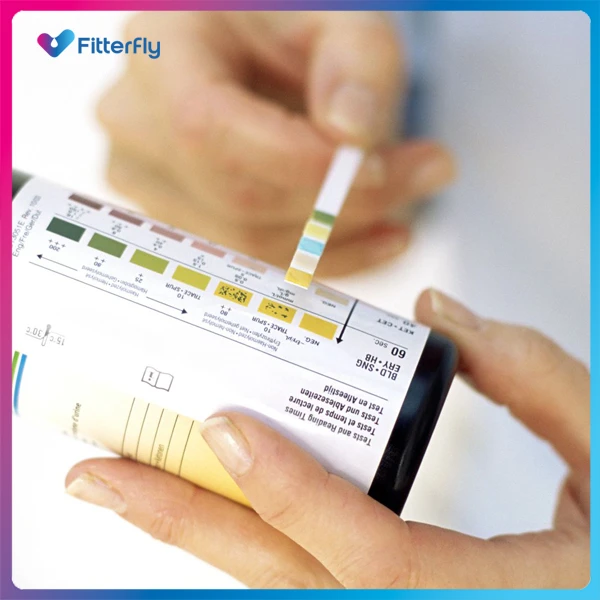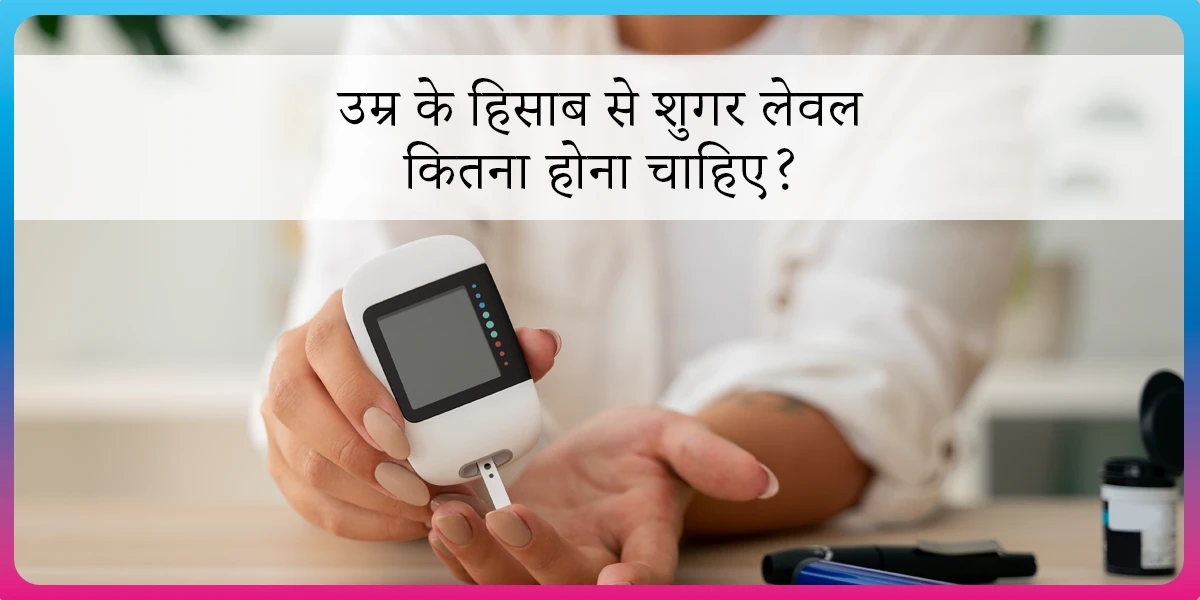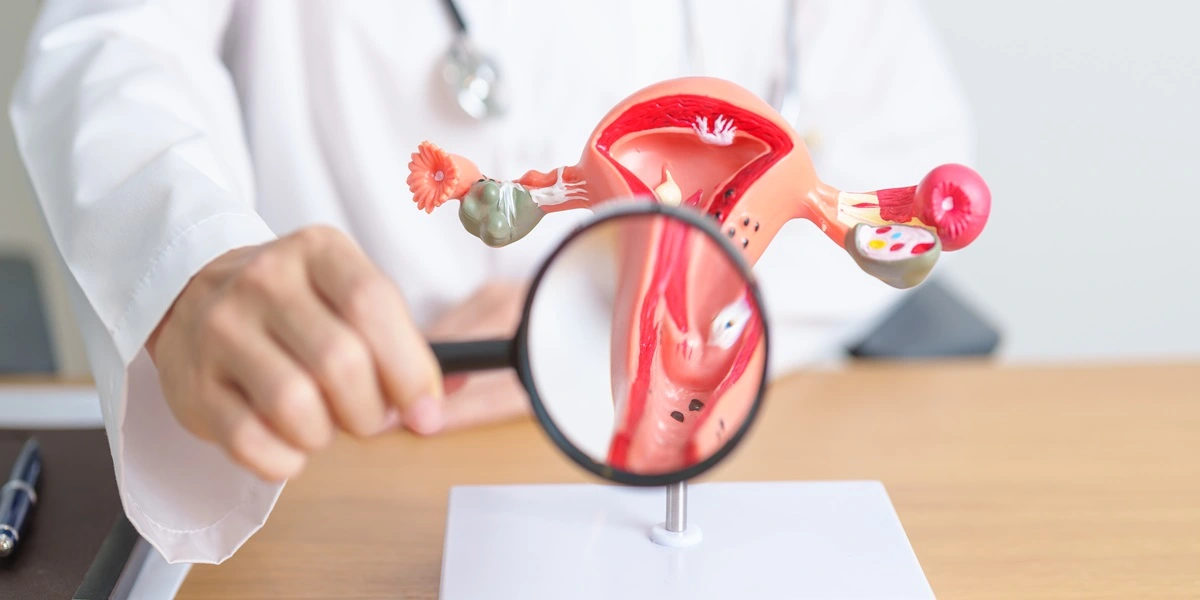Alarming Blood Sugar Levels: What You Should Know and Do

Diabetes (type 1 and type 2) is usually characterised by high blood sugar levels. But what if we told you that blood sugar levels are not the only thing you need to worry about in diabetes?
In some individuals, the rise in blood sugar levels (over 240 mg/DL) may be accompanied by high blood ketone levels. This is called diabetes ketoacidosis (DKA) and is a common complication of type 1 and sometimes type 2 diabetes.
This condition with high blood sugar and ketones can be an alarming situation.
Another complication that is common in people with type 2 diabetes is Hyperosmolar nonketotic diabetic coma (HHNC). It is characterised by increased blood sugar levels, severe dehydration, drowsiness, dizziness and absence of ketosis or acidosis.
This is more common in elderly individuals and can be life-threatening. Treatment of HHNC usually involves rehydration (by fluid administration) and insulin therapy.
Let’s understand what happens when your blood sugar levels are alarmingly high and how to prevent it!
Symptoms of Alarmingly High Blood Sugar Levels
Here are a few symptoms of high blood sugar levels that can be considered an emergency situation:
- Fatigue or weakness throughout the day
- Feeling exceptionally tired performing regular activities
- Dry mouth
- Increased thirst, despite having water or fluids
- Nausea and vomiting
- Frequent urination
- Blurry vision
- Dizziness on standing up
- Drowsiness that may make an individual unresponsive (if they go into a diabetic coma)
Signs of High Blood Sugar Levels
If you are in a hyperglycemic emergency, you may show the following signs:
- Blood sugar levels over 240 mg/dL
- Ketones in urine
- Severe dehydration (dry skin, dry mouth, sunken eyes)
- Rapid pulse and breathing
Diabetic Ketoacidosis (DKA) & Ketosis
Diabetic ketoacidosis is a serious complication of type 1 diabetes but can occur in uncontrolled type 2 diabetes as well.
- It can be life-threatening.
- When there isn’t sufficient insulin in the body, the liver breaks down fat into ketones.
- When too many ketones are produced, they accumulate in the blood.
DKA occurs most often when the blood sugar levels rise to alarmingly high levels, i.e., over 250 mg/dL. Sometimes, DKA can occur even at blood sugar levels below 240 mg/dL. So, it is essential to check for other signs and symptoms in addition to your blood sugar levels to confirm diabetic ketoacidosis.
Symptoms of Diabetic Ketoacidosis
A few symptoms that may indicate diabetic ketoacidosis include:
- Deep, rapid breathing
- Dehydration
- Decreased alertness
- Flushed face
- Frequent urination and thirst that may last more than a day
- Fruity breath
- Headache
- Nausea and vomiting
- Abdominal pain
- Muscle aches or stiffness
To know your chances of Diabetes reversal, take the Diabetes Reversal TestDiabetes Reversal
Calculator
How to Test for Ketones?
If your doctor suspects alarmingly high blood sugar levels, they may suggest you undergo tests for diabetic ketoacidosis as well. Testing can be at-home or lab tests.
At-home testing involves using a dip-stick method with ketone strips. To perform a home ketone test, you can follow the steps mentioned below:
- Collect the urine sample in a container. The container will have a marking about how much urine you need to collect.
- Take the ketone urine strip and dip it into the urine you collect.
- The ketone strips will change colour (check the package or speak to your doctor about how to interpret the test strip results). Based on the colour change, you will know if your urine ketone levels are a cause of concern).

Lab tests include
- Urine test
- If urine is positive for ketones, blood is tested for ketones.
- Blood ketones
Other tests include
- Arterial blood gas test (ABG Test)
- Electrolytes like sodium
- Random, fasting and post-prandial blood glucose test
- Urine microscopy
- Osmolality blood test
Treatment for Alarmingly High Blood Sugar Levels
Diabetic ketoacidosis is usually treated as an emergency in the hospital. Confirm the same with your doctor. Treatment usually includes:
- Replacing fluids to counter dehydration (Orally or IV)
- Replacing electrolytes with very little insulin in the blood can reduce electrolyte levels.
- Receiving insulin as it helps reverse DKA
- Following your doctor’s prescription of medicines, including antibiotics, to treat any infections.
How do you prevent high blood sugar levels and their complications?
People with diabetes must always be aware of their blood sugar levels, keep them under control, and prevent them from rising to alarmingly high levels.
Making healthy lifestyle modifications is the best way to keep your blood sugar levels within the normal range and prevent it from rising to alarmingly high levels.
Here are some Dos and Don’t to prevent alarmingly high blood sugar levels
1. Clean and healthy diet
- Speak to your doctor and dietician about the right foods to include in your diet to help lower your blood sugar levels.
- Increase your fibre intake and reduce high sugar and carbohydrate foods to bring your blood sugar levels within the normal range and prevent them from rising to alarmingly high levels.
- Consult your diabetologist and dietician before introducing significant changes to your diet.
2. Regular exercise
- Exercise forms an integral part of blood sugar management.
- You must ensure you exercise regularly, as physical inactivity can cause a rise in blood sugar levels.
3. Get a good night’s sleep
- There is sufficient scientific evidence to suggest that sleep disturbances can contribute to a rise in blood sugar levels.
- If you are at risk for a spike in blood sugar levels, try and get a minimum of 7 to 9 hours of sleep every night.
4. Effective stress management
- Chronic stress is a known contributing factor to diabetes and diabetes-related complications like diabetic ketoacidosis.
5. Regular monitoring
- If you have diabetes, you must perform self-monitoring of blood glucose (SMBG) or continuous glucose monitoring (CGM) to track your blood sugar levels and how your lifestyle choices affect them.
- Any significant variation must be reported to your doctor at the earliest.
- Check your blood sugar levels at more frequently if they are rising fast.
- In many cases, an alarming spike in blood sugar levels and the development of high blood sugar levels can be prevented. SMBG and CGM are also effective tools to prevent DKA and HHNC.
- Don’t ignore early symptoms.
6. Follow your doctor’s prescription
- Always follow your doctor’s prescription of medications and lifestyle modifications.
- Avoid stopping medications or reducing their dosages without consulting your doctor, as it can result in abnormal blood sugar levels.
- Do not self-medicate.
- Visit your diabetologist or physician regularly to allow them to monitor your blood sugar levels and evaluate your lifestyle. Doing so can help prevent DKA, HHNC and maintain your blood sugar levels within the optimum range.
How to Reduce Fasting and Post-Prandial Blood Sugar Levels?
1. Ways to Reduce Fasting Blood Sugar Levels
- Eat a healthy diet rich in fibre, vitamins, proteins and minerals.
- Keep your dinner time early.
- Avoid having sugar-containing desserts or sweets at night
- Avoid alcohol
- Get a good night’s sleep, including the night before your test
- Lower your stress levels
- Go for post-dinner walks
- Follow your doctor’s advice and prescriptions
2. Ways to Reduce Post-Prandial Blood Sugar Levels
- Avoid eating a meal that is loaded with sugars and carbohydrates (limit foods with high glycemic index)
- Avoid alcohol
- Go for a short walk after your meal
- Ensure you get your regular workouts
- Don’t skip your medications
FitterTake
Diabetes is a manageable condition, and with the right help and practices, you can keep your blood sugar levels under control. It is very easy for blood sugar levels to shoot up to alarmingly high levels in people with diabetes.
However, you can prevent diabetes-related emergencies by checking your blood sugars regularly, following a healthy diet and lifestyle and using your doctor’s prescription.
Need help in managing your diabetes? Check out Fitterfly’s Diabetes Prime Program. To learn more, speak to us or simply give us a missed call at 08068507599, and we will reach out to you.
At Fitterfly, we use continuous glucose monitoring (CGM) to take over 1,300 readings in two weeks. This helps us understand your HbA1c readings and how your blood sugar levels vary during the day.
This helps us understand the root cause of your high blood sugar levels and map your personal glycemic response.
REVERSED Diabetes in 3 months


5.7%
Happy members
EMI
Guarantee
4.8/5
Diabetes Prime Program
This blog provides general information for educational and informational purposes only and shouldn't be seen as professional advice.
Frequently Asked Questions
What levels of blood sugar are dangerous?
If you have been wondering if blood sugar levels are dangerous, here’s what you need to know! Blood sugar levels above 240 mg/dL accompanied by symptoms and ketones in blood and urine are considered alarming and require immediate medical attention.




















